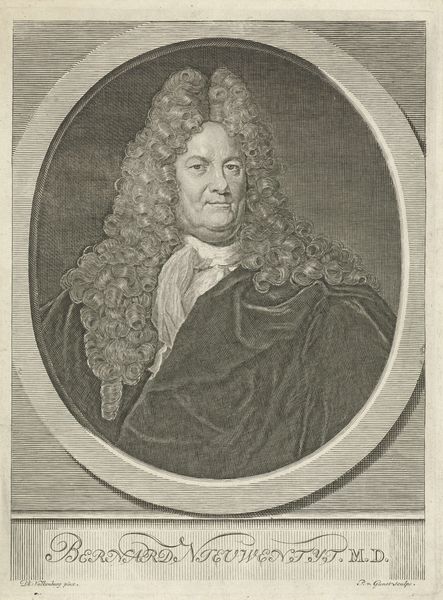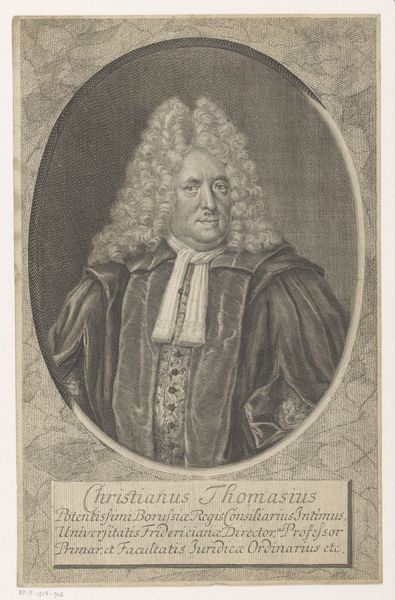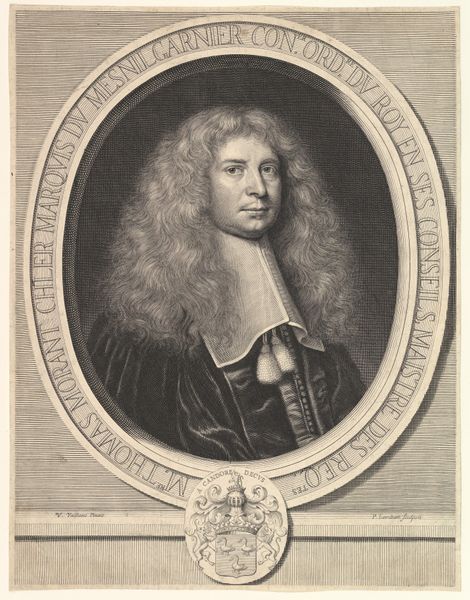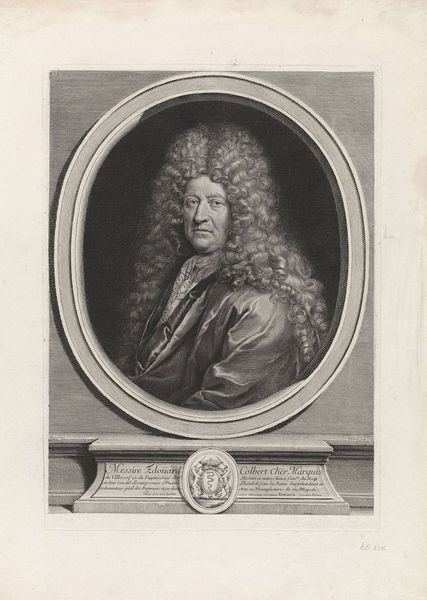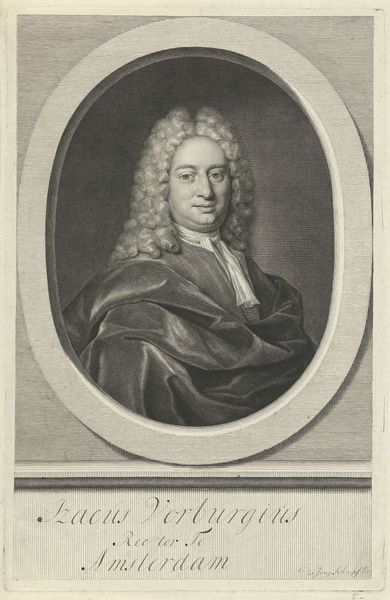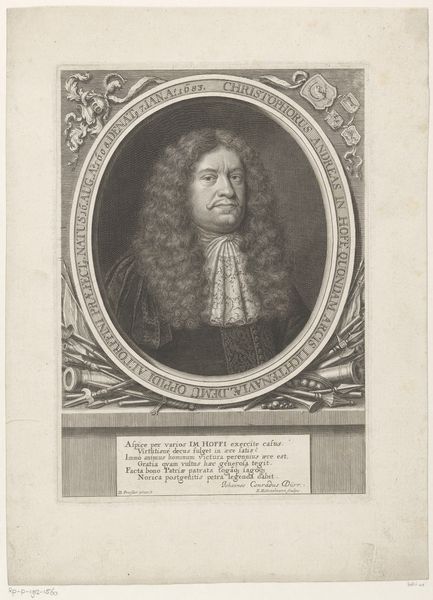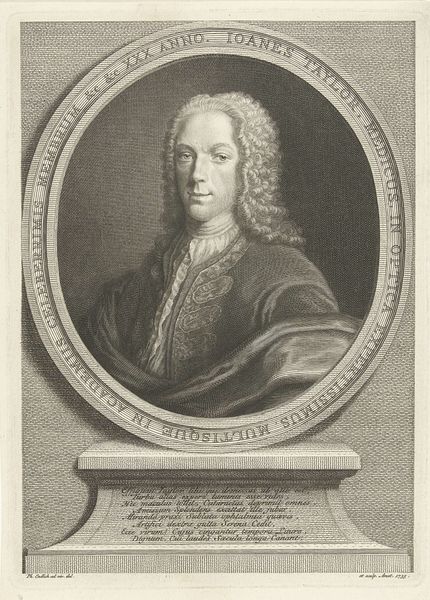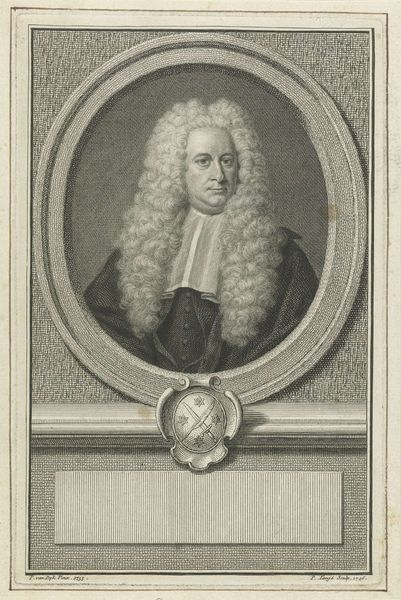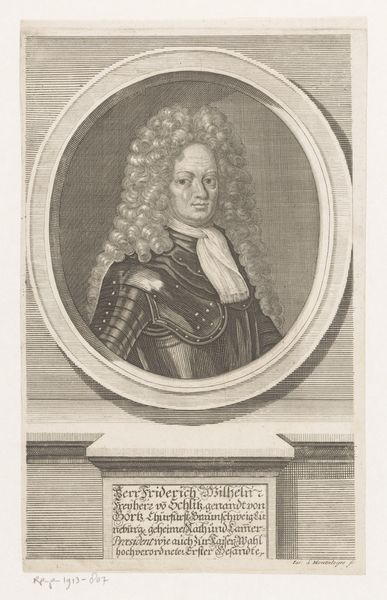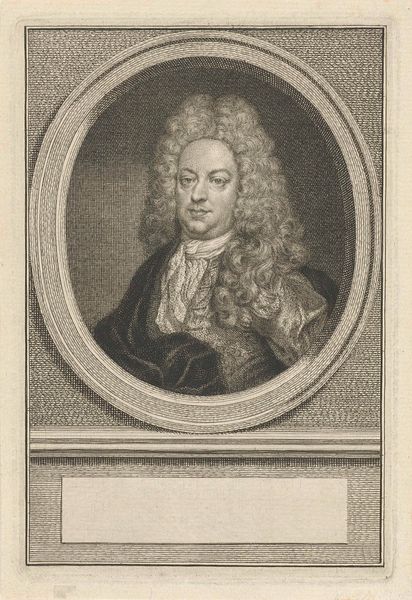
metal, engraving
#
portrait
#
baroque
#
dutch-golden-age
#
metal
#
old engraving style
#
historical photography
#
history-painting
#
engraving
Dimensions: height 357 mm, width 235 mm
Copyright: Rijks Museum: Open Domain
Curator: Good day! Today we are observing a captivating piece from the Dutch Golden Age, "Portret van Geerlof Suikers," rendered between 1717 and 1731 by Pieter van Gunst. The Rijksmuseum holds this beautiful engraving. Editor: The man’s gaze is definitely the focal point. Despite being a monochromatic engraving on metal, there is something regal and somewhat melancholic about his expression. And that wig—a statement, to say the least. Curator: Indeed. The wig itself is a potent symbol of status and power in that era. These elaborate hairstyles were expensive to maintain and took hours to create. They signalled a certain degree of social standing and affiliation with the elite. Think of the cultural weight a wig like this carries in portraying identity and power. Editor: Exactly! These portraits served to reinforce a sense of order. They spoke of power structures, who had access and privilege and how that hierarchy presented itself. Suikers' attire reflects that power dynamic in the Dutch Republic. Curator: Absolutely. Look closer at the oval frame surrounding Suikers. The way the artist has inscribed his name directly around the portrait feels almost like an echo—reiterating the man's identity and imprinting his presence for posterity. It creates a sense of timelessness. Editor: And observe the elaborate coat of arms displayed so prominently. Family lineage, inherited status—these things are vital clues to understanding his place in Dutch society, reminding us how important ancestry was to solidifying position during this time. The texts above and below offer context about birth and passing, bookending a life of significance, framed within societal expectations. Curator: I am struck by how Van Gunst immortalizes not just a man, but also a historical and cultural moment. Each line of the engraving embodies social performance. Thank you for pointing out these subtle nuances, it really makes one consider the function and power of imagery and art history. Editor: Agreed! Looking at art as embedded in specific contexts helps us unravel not only artistic intentions, but how social roles and values influenced image making. A thought-provoking engraving!
Comments
No comments
Be the first to comment and join the conversation on the ultimate creative platform.


